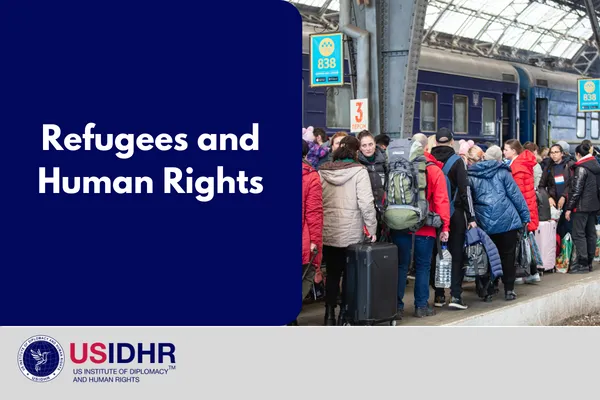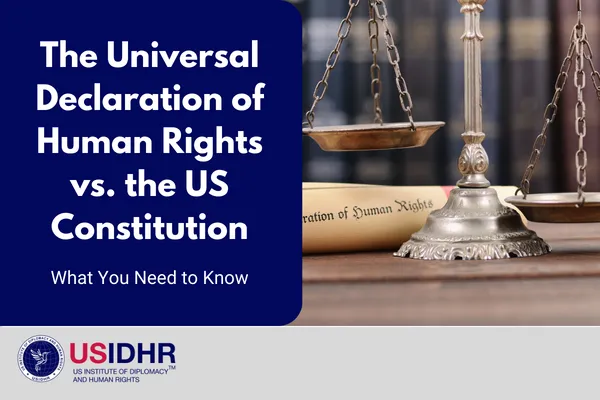
As the conflict between Russia and Ukraine rages on, increased displacement makes millions of individuals vulnerable to the threat of human trafficking. According to BBC News [12], more than 14 million Ukrainians have been displaced since Russia’s invasion on February 24th, 2022. A mass exodus that has become the largest European migration since World War II (Berger[4]). Ninety percent of these refugees are women and children, a population exceptionally vulnerable to human trafficking (Gijs[9]). As the conflict in Ukraine continues and millions of people flee their homes, there needs to be a concerted human-rights-based effort to protect refugees from the dangers of human trafficking. The USIDHR team has seen the devastating impacts of trafficking first-hand after visiting the CATTIA Community Center in Brasov, Romania. Conflicts are one of the biggest catalysts for an increase in human trafficking hence why, the municipality, entrepreneurs, and civil society organizations in Romania united, in the Nobody Left Behind project, to work on the integration of Ukrainian refugees that arrive in the country. At USIDHR, we champion education as critical in fighting back against human rights violations such as human trafficking. The following article will explore why human trafficking in Ukraine has increased as a result of the ongoing war and what can be done to address this issue.
Human Trafficking and Factors of Vulnerability
First, though, we need to clarify what is meant by human trafficking. There are many practices associated with human trafficking, but at its core trafficking in persons is the “the recruitment, transportation, transfer, harbouring or receipt of persons—by force, coercion, fraud or some other form of deception—for the purpose of exploitation”[1]. The key component of trafficking is “for the purpose of exploitation”. For the explicit purpose of forced labor, forced marriage, organ trade, slavery, and sexual exploitation humans are treated as commodities for monetary and power gains. Although there is an international legal framework in place to criminalize and mitigate trafficking, millions of people are trafficked around the world each year. The “Global Estimates of Modern Slavery” (2016) from the International Labor Organization estimates that there are 24.9 million victims of human trafficking worldwide[10]. Women and girls continue to be the primary targets for human trafficking as well as sex trafficking which continues to be the most common form of human trafficking[1]. UNICEF further reports that the trafficking trade is the 2nd largest criminal industry in the world, an industry that is rapidly growing[7].
Human trafficking is a gross violation of our universal human rights. In particular, the human rights most relevant to human trafficking are the right to life, the right not to be submitted to slavery, the right not to be subjected to torture, the right to be free from gendered violence, the right to freedom of movement, and many more[1]. The UN Human Rights Office of the High Commissioner highlights the following as the main international instruments used to combat this horrific crime: the Palermo Protocol, the ILO Forced Labour Convention, the ILO Abolition of Forced Labor Convention, the Slavery Convention, the UN Convention for the Suppression of Traffic in Persons and the Exploitation of Prostitution of Others and the International Covenant on Civil and Political Rights[13]. Most importantly is the Palermo Protocol which requires all member States “to criminalize trafficking, attempted trafficking and any other intentional participation or organization in a trafficking scheme”[13]. This protocol, which is a supplement to the United Nations Convention Against Transnational Organized Crime is an essential milestone in human rights laws as it provided the first internationally agreed definition of human trafficking[1]. These international human rights laws are critical to anti-trafficking efforts as it is a difficult crime to detect and prosecute.
Although women and children appear to be the primary targets for trafficking in persons, there are a wide variety of factors that make an individual vulnerable to the threat of trafficking. Individuals already isolated from their social networks can be susceptible to trafficking. Social inequalities, poverty, and gender/race-based discrimination have been identified as important factors in increased vulnerability to trafficking[1]. The Human Trafficking Institute also identifies substance use dependency, unstable housing conditions, and migration as socio-economic factors often targeted by traffickers[14]. UNODC further details political instability and lack of education as contributing factors[14]. For this article, it is important to look at migration/movement as a factor of vulnerability. Because of language barriers, economic hardship, and/or lack of social connections migrants are increasingly susceptible to being taken advantage of. Large waves of migration due to armed conflicts can additionally create vulnerable populations who can become victims of trafficking.
Human Trafficking in Ukraine Before the War
Now that we have established a comprehensive understanding of human trafficking and the elements that go into it, we need to apply this to the context of Ukraine. Since the separation of Ukraine from Russia in 1991, the country has been a hotspot for the slave and human trafficking trade (Thelwell[20]; U.S. Agency for International Development[21]). In 2013 the country was listed among those with a great problem of human trafficking and is recognized as a country of origin, transit, and destination for human trafficking (Melnyk[15]). By GDP Ukraine is the second poorest country in Europe and for the past three decades, the country has struggled with government consolidation (Tucker[22]). Conditions that play into vulnerability factors for trafficking in persons. To escape political instability and poverty millions of Ukrainians have fled to Germany, Russia, Belarus, Poland, and Israel (Tucker[22]). Putting displaced persons into popular trafficking routes. As a transit country for human trafficking, Ukraine geographically maintains efficient transportation routes that allow for quick and undetectable trafficking. Particularly its vast sea borders and large migration corridor with Russia (Melnyk[15]). Over the last 30 years, there have been more than 260,000 known Ukrainian trafficking victims (Thelwell[20]). Between 2019 and 2021 there were an estimated 46,000 Ukrainians trafficked (U.S. Agency for International Development[21]).
The 2014 occupation of the Donbas region and Crimea has exacerbated civilian safety concerns. This population has been especially susceptible to labor trafficking, due to limited employment options and displacement. In 2020, more than 90% of Ukrainian victims of human trafficking were for labor exploitation, this is up from 80% in 2012 (Hoff and de Volder[11]; Melnyk[15]). Specifically in the agriculture, construction, and manufacturing sectors (Hoff and de Volder[11]; Melnyk[15]). Although women and girls remain the primary targets of traffickers, the increased trend of men as victims highlights exploitation in forced labor ( Melnyk[15]).
Even though there are many NGOs and state authorities involved in combating human trafficking in Ukraine, the Ministry of Social Policy is the primary actor. The Ministry was appointed in 2012 to form, implement, and integrate all of the state’s policies in combating human trafficking. While there are several national laws relating to combating human trafficking, the 2004 ratification of the UN Convention Against Transnational Organized Crime and the Palermo Protocols is a critical milestone. As is the 2011 ratification of the Council of Europe Convention on Action Against Trafficking in Human Beings. Holding the Ukrainian government accountable to international law to protect victims of human trafficking and enforce measures to mitigate the crime (Melnyk[15]).
Human Trafficking in Ukraine after the Russian Invasion
Since Russia invaded Ukraine in February 2020, more than 14 million people have fled their homes. Eight million are displaced within Ukraine while over 7 million have fled to the neighboring countries of Poland, Romania, Russia, Hungary, Moldova, Slovakia, and Belarus (BBC News[12]). According to UN reports 90% of those refugees are women and children (Gijs[9]). In March, more than 1.5 million children had fled Ukraine, many of whom were unaccompanied (Diaz[6]). Additionally, 2.8 million children have been internally displaced (Hoff and de Volder[11]). Putting them at even higher risk of trafficking.
With already existing human trafficking rings and routes in place in Ukraine, the fog of war is likely to increase business. There have already been hundreds of reports of traffickers showing up at refugee camps preying on women to be sold into the sex trade. Social media platforms are also being used to lure in refugees in the disguise of housing or job opportunities (Berger[4]). In one case a Ukrainian woman had fled to Düsseldorf, Germany following an online offer for housing. When she arrived the man confiscated her identification papers, and demanded labor and sexual acts (Adler[2]). The lack of regulation at border points and refugee camps is another red flag. While it is wonderful to see massive volunteer forces coming to help there are few registration systems to verify the legitimacy of volunteers. In a BBC article, Elena Moskvitina, a Ukrainian refugee, details how fake volunteers would turn up at a refugee center demanding to know where she was staying and aggressively pressure her and her children to travel to Switzerland with them (Adler[2]). There have also been several cases of groups of men pretending to be military and police claiming that they are there to help the refugees. Now four months into the war the more overt indicators of trafficking have largely disappeared as police regularly patrol refugee centers (Fallon, Cundy, and Crean[8]).
Conclusion:
Evidence indicates that the instability created by war breeds ample conditions for traffickers, seeking to exploit vulnerable populations (United Nations: Office on Drugs and Crime[19]; Hoff and de Volder[11]). In the case of Ukraine, a country with an already well-established trafficking trade the risks are clear. While countries around the world have welcomed Ukrainian refugees, there needs to be a human-rights-based effort to acknowledge and tackle the threat of human trafficking amidst this conflict. Key areas to address the gaps in the anti-trafficking response to this conflict should be reducing vulnerabilities to human trafficking, strong anti-trafficking structures, and essential assistance programs for victims of trafficking. This includes a coordinated effort from governments, international organizations, and NGOs. With the intention to provide widespread trafficking education campaigns, increased refugee registration, immediate physical and mental health care, safe transport routes out of Ukraine and within neighboring countries, accountability for family reunification, and the promotion of decent employment for refugees.
At the US Institute of Diplomacy and Human Rights, our mission is to advance education and recognition of global human rights. As an industry and a crime human trafficking is severely taboo and unprosecuted, due to a lack of awareness. To address this inadequacy USIDHR has developed the Human Trafficking Prevention Training to help all individuals learn about trafficking in person and strategies to mitigate it. Through this course, students become certified Anti-Trafficking Consultants and further educate their communities on the factors that contribute to human trafficking.
Reference list:
Certainly, here's the complete reference list with the index numbers:
[1] “About Trafficking in Persons and Human Rights.” OHCHR. Accessed June 13, 2022. https://www.ohchr.org/en/trafficking-in-persons/about-trafficking-persons-and-human-rights.
[2] Adler, Katya. “How the Sex Trade Preys on Ukraine’s Refugees.” BBC News. BBC, March 27, 2022. https://www.bbc.com/news/world-europe-60891801.
[3] Ahern, Laurie. “Ukraine Orphanages Feeder for Child Trafficking.” HuffPost. HuffPost, June 2, 2016. https://www.huffpost.com/entry/ukraine-orphanages-feeder_b_7344882.
[4] Berger, Miriam. “Human Trafficking Likely to Increase as Ukraine War Drags, Groups Warn.” The Washington Post. WP Company, May 10, 2022. https://www.washingtonpost.com/world/2022/05/10/human-trafficking-ukraine-war-russia-refugees/.
[5] Cockbain, Ella, and Aiden Sidebottom. “The War in Ukraine and Associated Risks of Human Trafficking and Exploitation Insights from an Evidence Gathering Roundtable.” Independent Anti-Slavery Commissioner, April 27, 2022. https://www.antislaverycommissioner.co.uk/media/1801/ucl-iasc-2022-roundtable-report-the-war-in-ukraine-human-trafficking-and-exploitation.pdf.
[6] Diaz, Jaclyn. “The 1.5 Million Children Who Fled Ukraine Are at Risk of Human Trafficking.” NPR. NPR, March 19, 2022. https://www.npr.org/2022/03/19/1087749861/ukraine-children-unicef-risk-report-human-trafficking\.
[7] “End Trafficking – Humanitarian Aid for Children in Crisis.” UNICEFUSA. Accessed June 13, 2022. https://www.unicefusa.org/sites/default/files/assets/pdf/End-Child-Trafficking-One-Pager.pdf.
[8] Fallon, Katy, Antonia Cundy, and Rosabel Crean. “Vigilantes Stalk Ukraine Border as Sex Traffickers Target Fleeing Women and Children.” The Guardian. Guardian News and Media, March 24, 2022. https://www.theguardian.com/global-development/2022/mar/24/vigilantes-stalk-ukraine-border-as-sex-traffickers-target-fleeing-women-and-children.
[9] Gijs, Camille. “Human Trafficking Risks Grow for Women, Children Fleeing Ukraine, Says New Report.” POLITICO. POLITICO, May 10, 2022. https://www.politico.eu/article/human-trafficking-risk-grow-women-children-flee-ukraine-report/.
[10] “Global Estimates of Modern Slavery – International Labour Organization.” International Labor Organization, 2016. https://www.ilo.org/wcmsp5/groups/public/—dgreports/—dcomm/documents/publication/wcms_575479.pdf.
[11] Hoff, Suzanne, and Eefje de Volder. “Preventing Human Trafficking of Refugees from Ukraine: A Rapid Assessment of Risks and Gaps in the Anti-Trafficking Response.” Freedom Fund, May 28, 2022. https://freedomfund.org/wp-content/uploads/UkraineAntiTraffickingReport_2022_05_10.pdf.
[12] “How Many Ukrainians Have Fled Their Homes and Where Have They Gone?” BBC News. BBC, June 6, 2022. https://www.bbc.com/news/world-60555472.
[13] “International Instruments Concerning Trafficking in Persons.” United Nations Human Rights Office of the High Commissioner. Accessed June 13, 2022. https://www.ohchr.org/sites/default/files/Documents/Issues/Women/WRGS/OnePagers/IntInstrumentsconcerningTraffickingpersons_Aug2014.pdf.
[14] “An Introduction to Human Trafficking – Background Paper.” United Nations Office on Drugs and Crime. Accessed June 13, 2022. https://www.unodc.org/documents/human-trafficking/An_Introduction_to_Human_Trafficking_-_Background_Paper.pdf.
[15] “Knowing What to Look for: Global Vulnerabilities to Human Trafficking.” Human Trafficking Institute, January 18, 2022. https://traffickinginstitute.org/knowing-what-to-look-for-global-vulnerabilities-to-human-trafficking/.
[16] Melnyk, Anna. “Trafficking in Human Beings in Ukraine.” D
CAF, October 2014. https://www.files.ethz.ch/isn/185732/Melnyk-THB-Ukraine.pdf.
[17] “OHCHR and Trafficking in Persons.” OHCHR, March 11, 2021. https://www.ohchr.org/en/trafficking-in-persons#:~:text=Many%20of%20the%20practices%20associated,they%20are%20human%20rights%20violations.
[18] Siegfried, Kristy. “Ukraine Crisis Creates New Trafficking Risks.” UNHCR. UNHCR, The UN Refugee Agency, April 13, 2022. https://www.unhcr.org/en-us/news/stories/2022/4/62569be24/ukraine-crisis-creates-new-trafficking-risks.html.
[19] “Targeted by Traffickers – Ukrainian Refugees at High Risk of Exploitation.” United Nations: Office on Drugs and Crime, March 24, 2022. https://www.unodc.org/unodc/en/press/releases/2022/March/targeted-by-traffickers—ukrainian-refugees-at-high-risk-of-exploitation.html.
[20] Thelwell, Kim. “Fighting Human Trafficking in Ukraine.” The Borgen Project. Kim Thelwell, May 28, 2021. https://borgenproject.org/fighting-human-trafficking-in-ukraine/.
[21] “Trafficking in Persons: Ukraine.” U.S. Agency for International Development, May 11, 2022. https://www.usaid.gov/ukraine/news-information/fact-sheets/trafficking-persons.
[22] Tucker, Maxim. “Sex, Lies and Psychological Scars: Inside Ukraine’s Human Trafficking Crisis | Maxim Tucker.” The Guardian. Guardian News and Media, February 4, 2016. https://www.theguardian.com/global-development/2016/feb/04/sex-lies-psychological-scars-ukraine-human-trafficking-crisis.
Join One of Our Certificate Trainings:
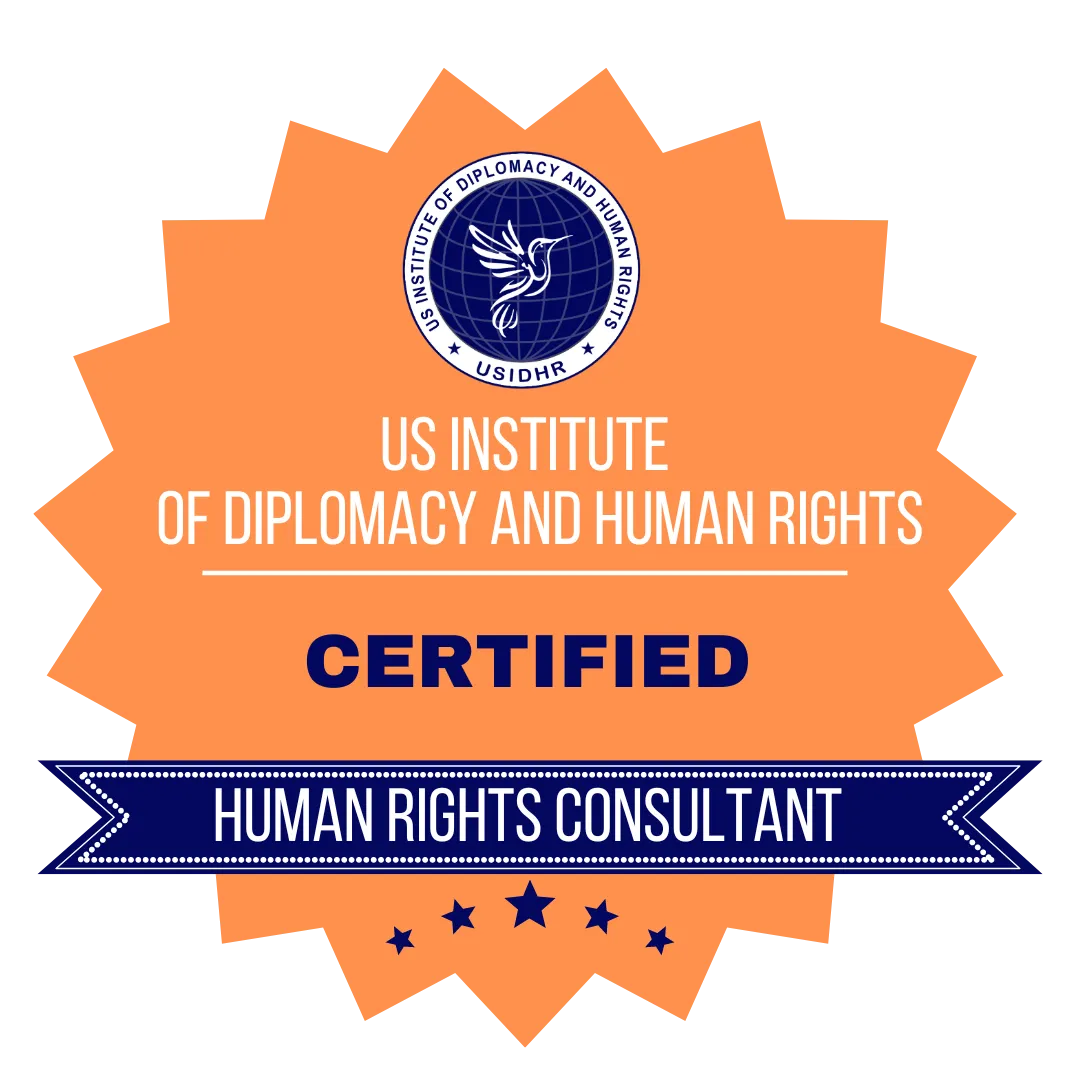
Human Rights Education Certification Training

Human Trafficking Certification
Training
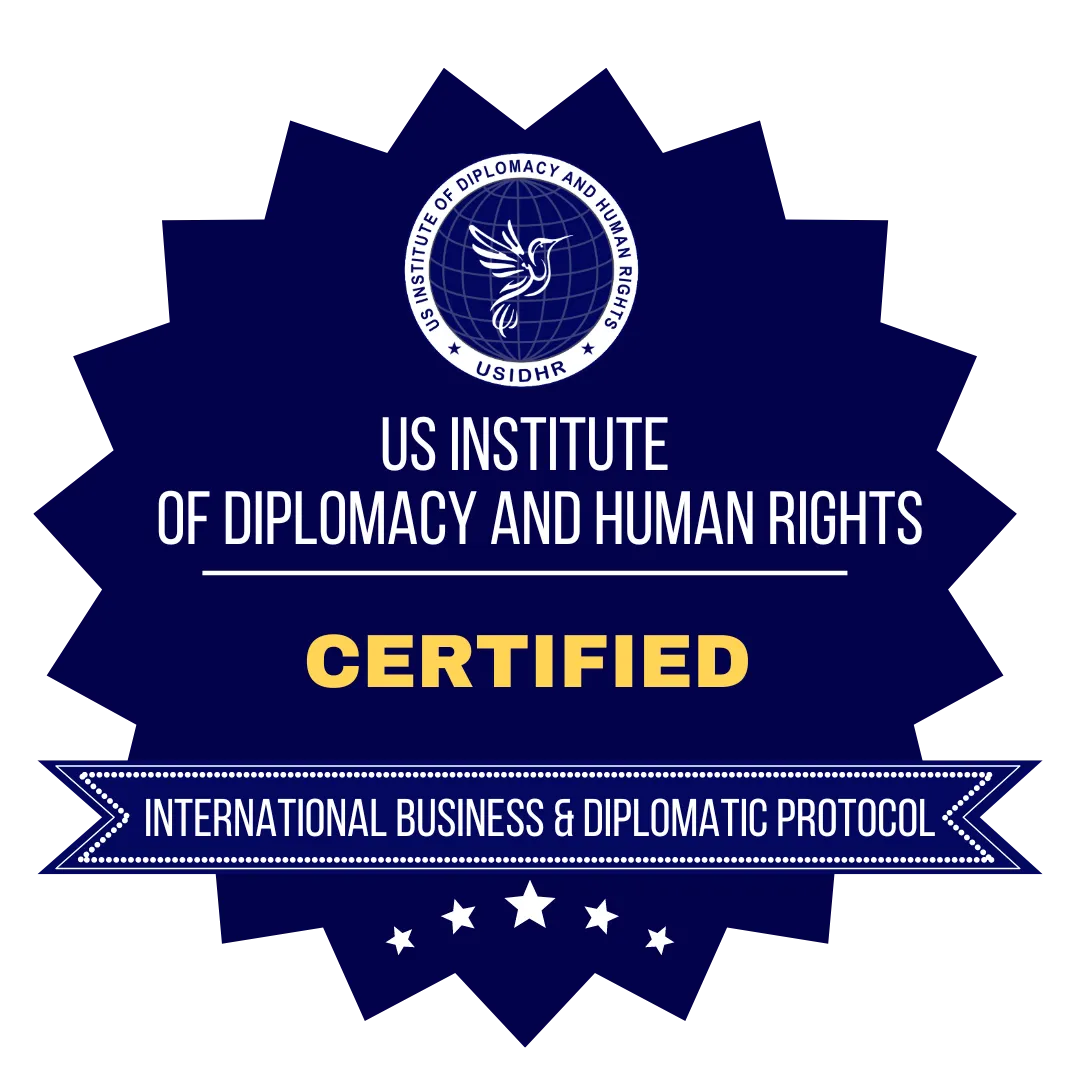
International Business and Diplomatic Protocol Certification

Capacitación En Derechos Humanos
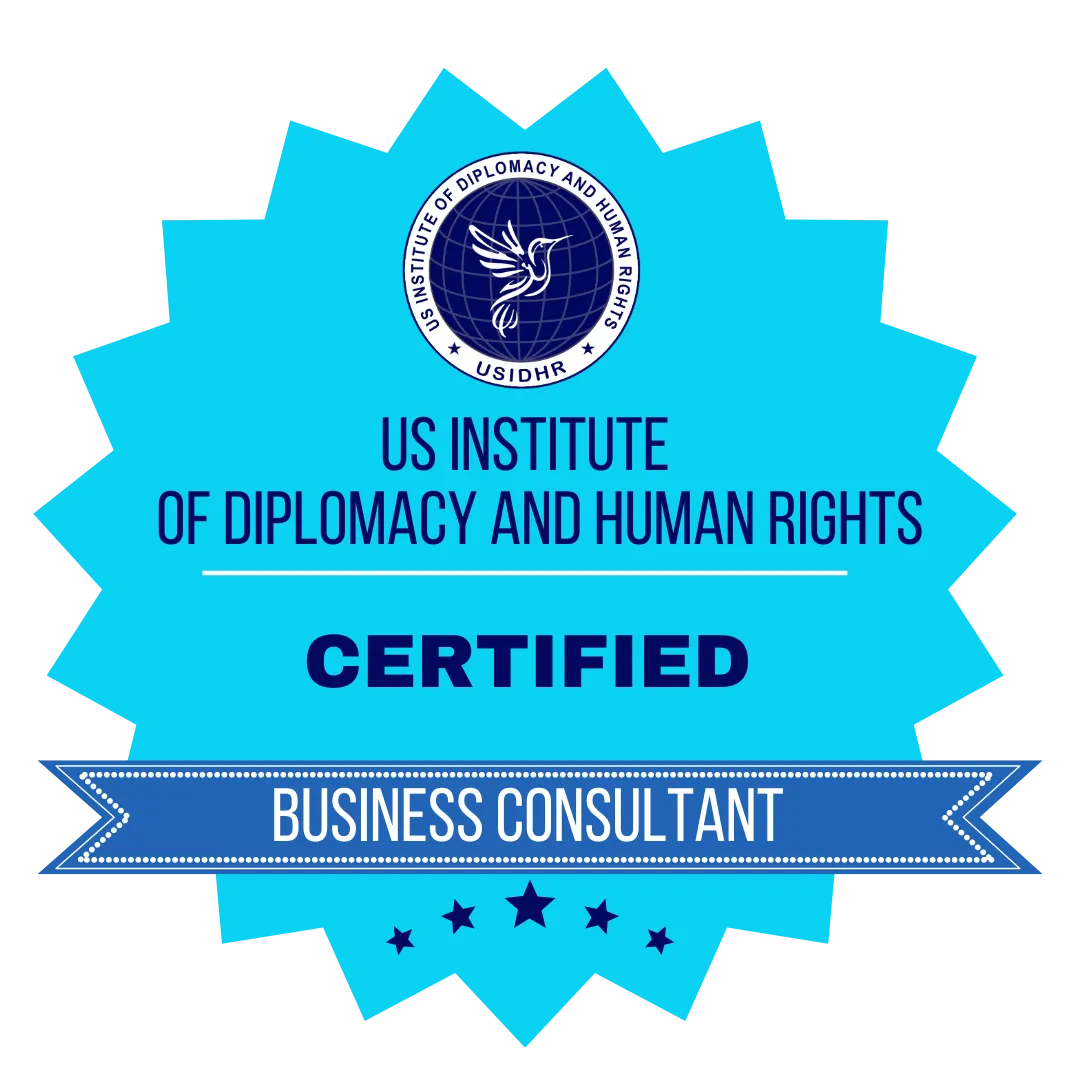
Business Consulting Certification Training
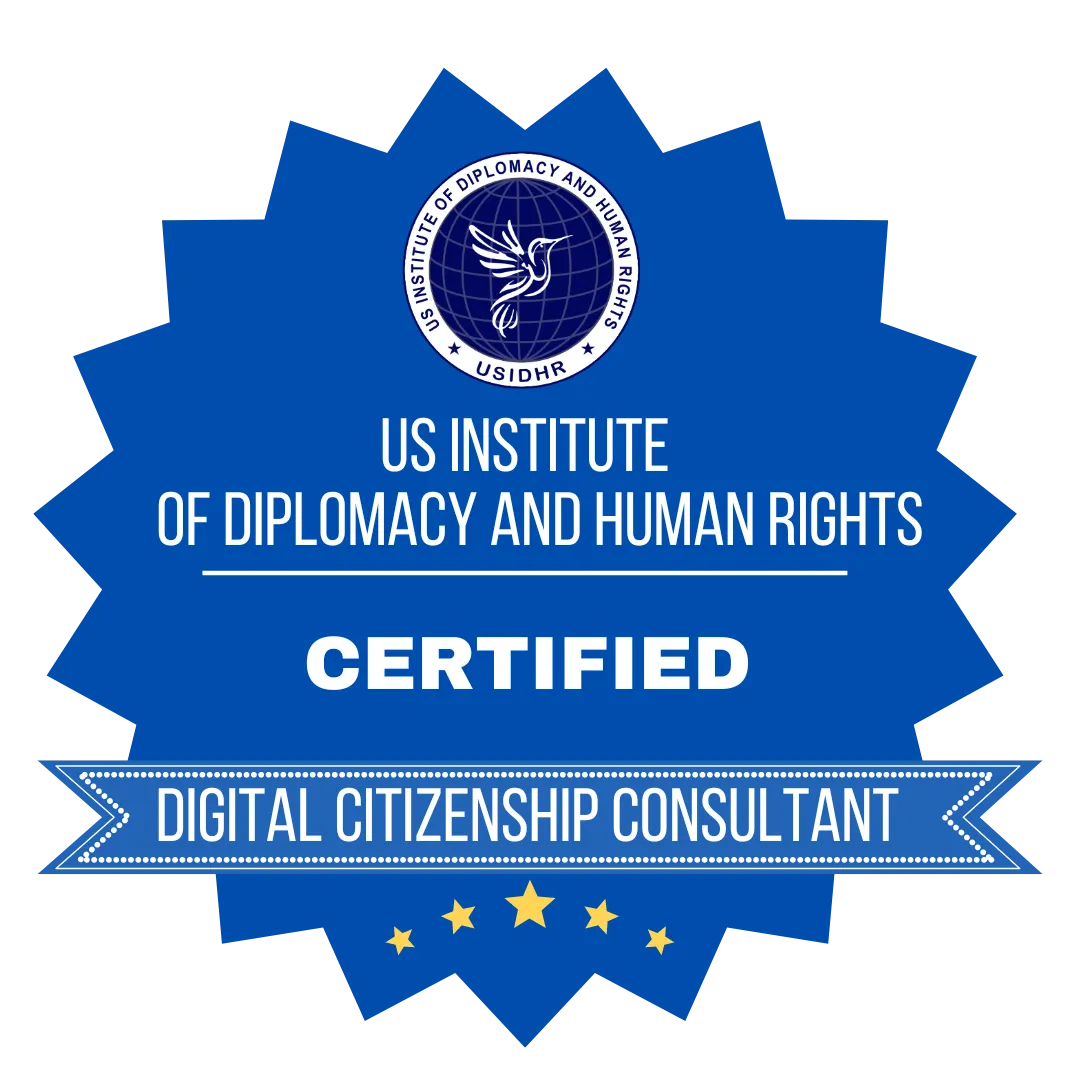
Digital Citizenship Certification
Training
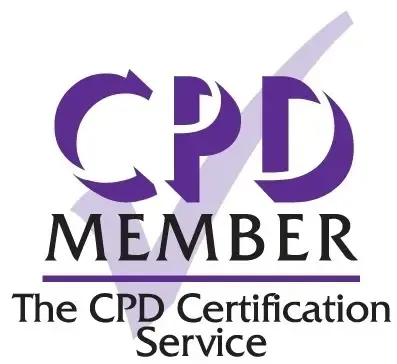
The US Institute of Diplomacy and Human Rights (USIDHR) is an International Continuing Professional Development (CPD) Accredited Organization. Accredited CPD training means the learning activity has reached the required Continuing Professional Development standards and benchmarks. The learning value has been scrutinized to ensure integrity and quality. The CPD Certification Service provides recognized independent CPD accreditation compatible with global CPD requirements
US Institute Of Diplomacy And Human Rights
1250 Connecticut Ave NW Ste 700, Washington, DC 20036


